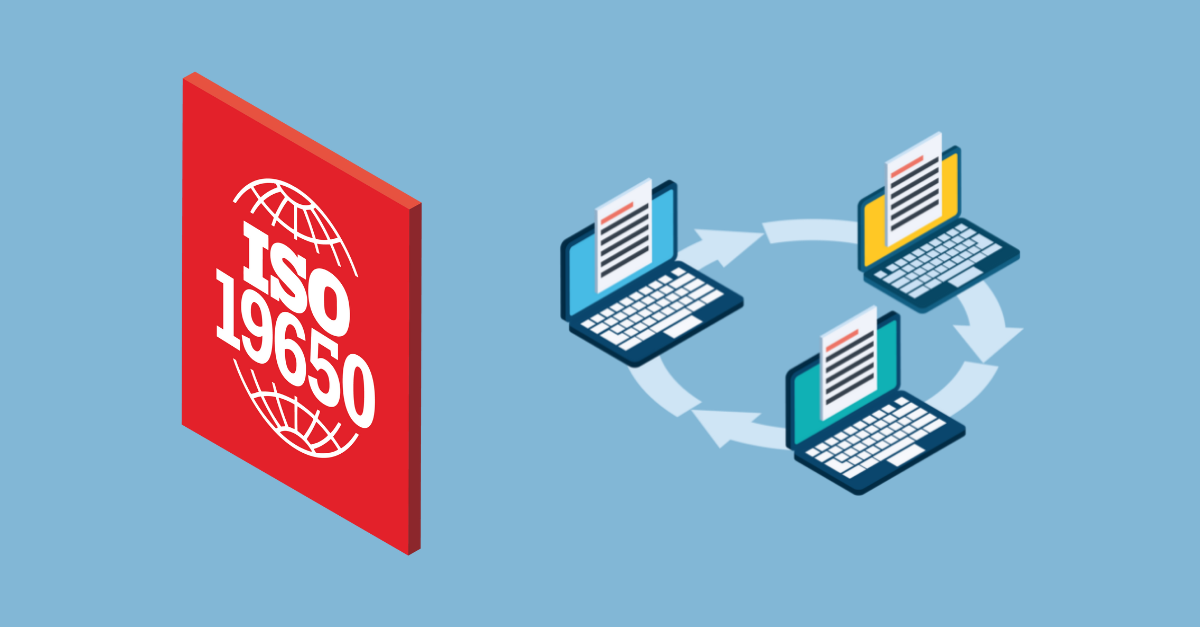ISO 19650: Overview, Requirements & Compliance in 2022
Being a part of the engineering and construction industry, naturally you run into many guidelines, principles and standards which dictate how you work. It can be an absolute maze!
With the industry transitioning to adopt Building Information Modelling (BIM), processes on infrastructure projects, new policies, and procedures (namely ISO 19650) are being developed to standardise how we work, collaborate and issue digital datasets. While these standards will ultimately simplify things, change can be confusing and daunting for some professionals out there. It’s a struggle to up right?
ISO 19650 is already well-established overseas, such as in the UK and is rapidly being adopted here in Australia and New Zealand with many infrastructure projects now requiring ISO 19650 certification. Change is coming so, let’s stay a step ahead of the game!
This article aims to gently introduce you to ISO 19650, covering who developed the standard, why our industry needs it, what it actually is, and how you can implement these policies and procedures across your entire business.
ISO 19650
ISO 19650 is a unified approach and international standard for managing information effectively over the whole lifecycle of a build asset using BIM.
Essentially, it’s a framework to standardise and improve hose design data and information is shared throughout the project lifecycle, from design to construction and asset management.
But Wait… BIM?
Not too clear on what BIM is?
Quick explanation: Build Information Management (BIM) is a collaborative process, allowing multiple stakeholders and architecture, engineering, and construction (AEC) professionals to work together on the planning, design, and construction of projects through a 3D model. It provides a real-time update at each stage of the process and ultimately creates a highly efficient environment to reduce costs and save time.
Watch: The Who, Why, What and How of ISO 19650
Check out a recent talk at our 2021 12d Tech Forum by Paul Shillcock (Managing Director) from Operam & Operam Academy, giving you a brief lowdown on everything ISO 19650. Operam is an independent management consultancy that specialises in the business processes associated to the management and collaborative production of information, whilst Operam Academy supports individuals in training and certifying ISO 19650.
Who Created ISO 19650?
Originally when the UK PAS 1192 standards were established, many organisations around the world adopted these standards into their designs, including companies within Australia.
From here, there was an international pull to have a universal and global system that can be utilised worldwide. Consequently ISO or the International Organisation for Standardisation produced ISO 19650. Specifically, the SC 13 committee within ISO oversee the organisation and digitisation of information about buildings and civil engineering works.
Why Do We Need ISO 19650?
Production of data and design for large infrastructure projects have traditionally performed in silos where disciplines have no direct communication with other disciplines. Architects would work with other architects, engineers keep to their own teams, surveyors are out in the field, and construction works focused on only the build.
This work environment can be extremely problematic as it introduces waste activities and creates information that can be inaccurate, ambiguous, or incomplete. Resulting in a significant increase in cost and time. For example, the design team may update the configuration of a highway intersection, causing water engineers to work on an outdated drainage network.
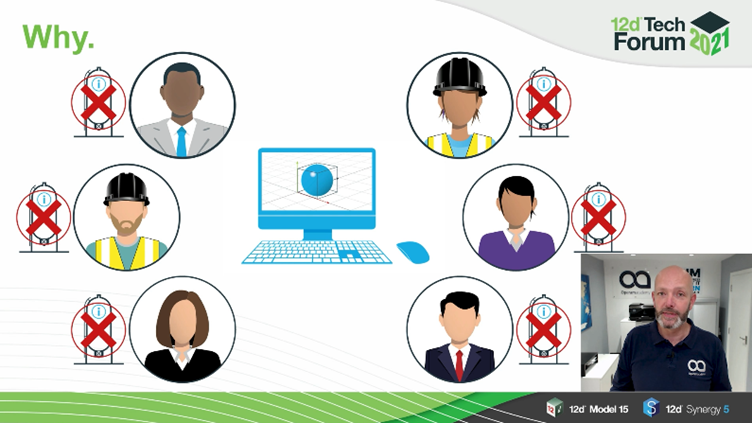
To combat this, workers need to work collaboratively and communicate effectively among all disciplines and stakeholders on a project.
“At the end of the day, standards are important. Imagine if we didn’t have the highway code and everyone drove how they wanted, like on whichever side of the road. It’d be an absolute carnage! So the same is true when we produce information and data.”
What Is ISO 19650?
As previously mentioned, ISO 19650 is a mammoth document and contains five parts which details how to consolidate the way information management is implemented in a collaborative yet effective way.
ISO 19650-1
The first in the series lists the concepts and principles for the management of information throughout the entire asset lifecycle, that is through both the delivery and operational phase.
ISO 19650-2
The second in the series sets up the information management process for the management of information during the delivery phase of assets.
ISO 19650-3
The third sets up the information management process for the management of information during the operational phase of assets.
ISO 19650-4
The fourth details the effective exchange of information between parties.
ISO 19650-5
Finally, the fifth in the series explains how to adopt a security-minded approach to managing information.
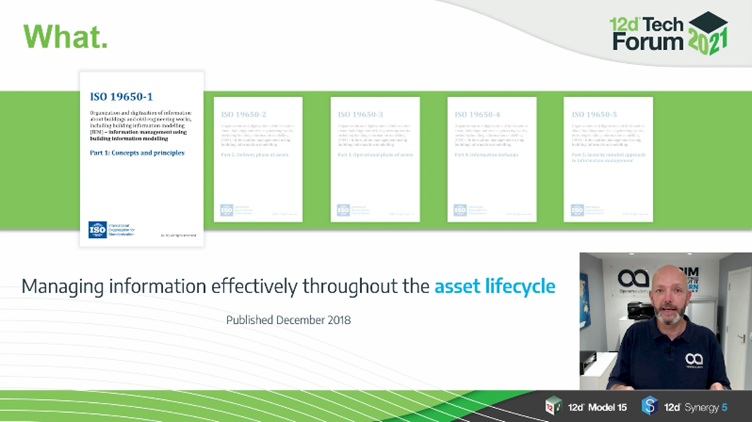

It’s binging time!
Register and access more talks like this one from Paul Shillcock. All 220+ sessions are available to watch on-demand through our virtual streaming platform, the 12d Tech Forum.
How Can We Implement ISO 19650?
Firstly, everybody in the project must agree to the information standard where all information will be produced against. It can be used and then reused throughout the asset lifecycle by other teams without the need for translation or loss of integrity.
This means agreeing on terms, acronyms, units, line styles, colour tables, symbology, any associated templates, grid referencing systems, name conventions, asset tagging, file format, data structure, data syntax, etc. Where possible all these information standards should be based on open data standards such as industry foundation classes (IFCs). However, regardless of whether they’re open standards or not, it must be agreed, documented, and used by everybody in the project.
Secondly, for each activity in the entire project, the team need to consider and then again agree on what the most effective production method and tools are for each activity. This includes generating information, coordinating together, inquire information about existing assets, and the check, review, approval, authorisation & acceptance of information process. Whatever methods are decided, it is essential that all teams involved have the capability and capacity to adopt that approach.
Finally, once all procedures are agreed upon, it must be documented. This is important so it can be applied consistently, measured, and further optimised.
The Common Data Environment
This is where a common data environment (CDE), such as 12d Synergy, comes into play. It’s the gold standard for managing project information when multiple parties are involved.
Now you may be forgiven to think that a CDE is just your regular document management system. Or maybe just an engineering management system, a geospatial information system or even just your relational database. It’s actually a combination of all of these! A CDE connects all these IT systems together, an integrated network to provide a centralised location for the management of your information.
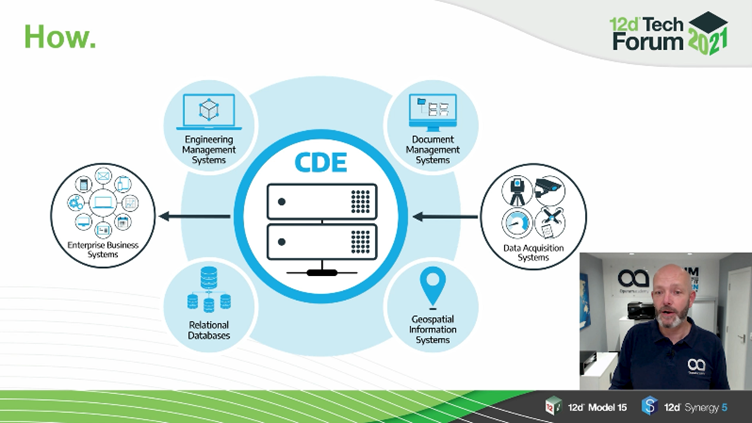
“A CDE is the enabling technology that support the collaborative production of information. This is important to know because it plays a big role in managing different types of information. We expect it to become the norm in the next few years, a CDE on a project level.”
To learn more about the common data environment and CDE workflow, read our CDE Guide here.
Let’s look at a typical CDE workflow.
A document or file generally starts in the blue area where it’s a Work in Progress state. Once approved internally, it moves in the Shared area where everyone in the team can see it. It is then authorised; the file is Published and issued to the client. Eventually once a project is complete, that file is Archived and accessible if needed. For example, if the asset is deemed to be defective or unsafe, the archived documents will be reviewed to evaluate if the design was to standard, and if the construction conformed.
This gated approach where documents and files are approved before moving into the next stage are to ensure there’s accountability and verification at each step, and that parties don’t have access to documents when they shouldn’t. For example, the construction team doesn’t have access to the design files until the design has been approved and issued for construction.
So, everything you would need to achieve ISO 19650 certification as previously mentioned, a common data environment supports that. It connects multiple teams to one repository, enables collaboration among different disciplines, and eliminates wasteful activities to ensure project efficiency.
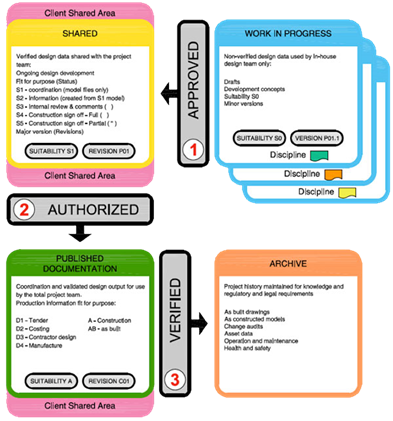
Register for More Training Talks
Enjoyed Paul’s talk for the 12d Tech Forum? We have plenty more… 80+ hours more across 220 sessions. There are talks covering current industry insights, project case studies, and even more 12d training content.
Register for an Industry Pass or a Training Pass to access our full library and watch everything on-demand for 12 months!
Learn More & Register Here: https://12dtechforum.com/


